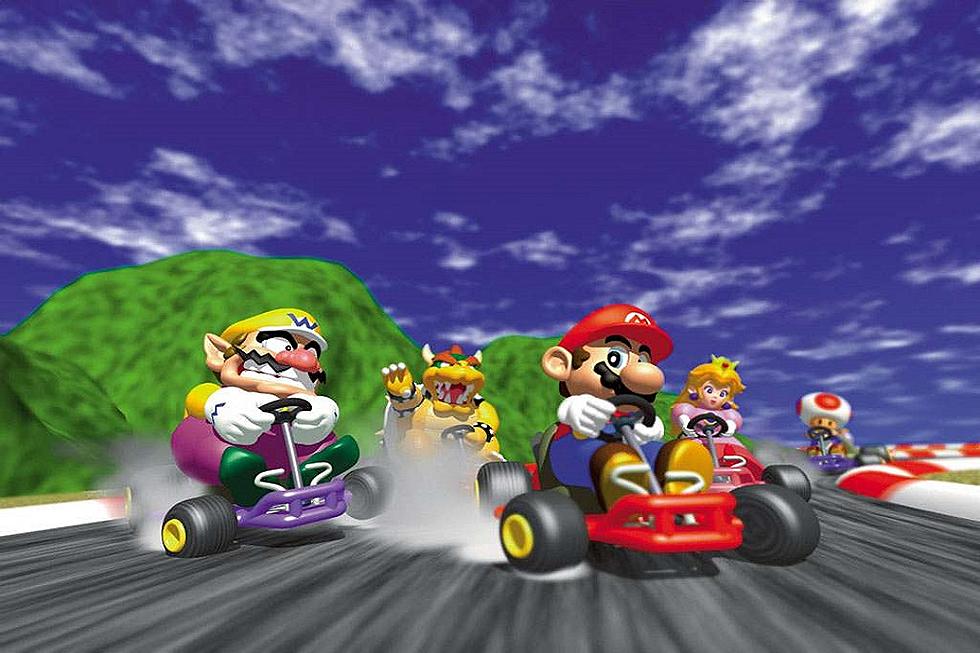
How Metroid Subverted Hero Roles and Established Open-World Platforming
There are a lot of great female characters in video games these days. There could always be more, but there was time when they were few, far between and beyond the abilities of those who were creating the games. In an industry all too ready to give us the typical male hero or anti-hero and damsel in distress, Metroid is game that played the perfect trick on our expectations. With Metroid, Nintendo established the open-ended platforming adventure as we know it alongside Konami’s Castlevania, eventually leading to the style of games we’d come to know by the “Metroidvania” label. It was today in 1986 that players were given their first ride in the Power Suit and journeyed into the depths of Zebes, all unknowingly behind the visor of one of the strongest women in video games.
Nintendo was already basking in the glory of platformer success with games like Donkey Kong and Super Mario Bros. and they similarly found success in adventure with the first Legend of Zelda. It was almost an all-too-natural next step for their next major project to combine the two. It was headed up by the Nintendo Research and Development 1 division, directed by Satoru Okada and Yoshio Sakamoto and produced by Gunpei Yokoi. The game was approached as a non-linear shooter in which exploration is crucial to progression. The team were fans of the 1979 original film Alien and particularly the creature designs of H.R. Giger. This style heavily influenced the setting, backdrops and encounters of Metroid.
Main character Samus Aran’s initial creation is attributed to Hiroji Kiyotake, who worked as a character designer on the game. However, Sakamoto recalled in director roundtable discussion on Metroid: Zero Mission (the transcript of which can be found on IGN) that the decision to make Samus a female came later. Specifically, Sakamoto remembers one team member musing about how it would be “kind of cool if it turned out that this person inside the suit was a woman.” To this end, the team kept it under wraps until the very end of the game when Samus takes her suit off, even going as far as to purposely refer to Samus with male pronouns such as “he” throughout the instruction manual.
Indeed, you are led into a journey with a very ambiguous protagonist, which serves the overall nature of Metroid quite well. The backstory goes that space pirates capture special creatures known as metroids from a Galactic Federation research station with the intention of creating a controllable army of them and using them to terrorize the galaxy. The Galactic Federation mounts an attack on the pirate fortress only to be beaten back by its defenses. Facing a terrifying threat to the universe, the Federation employs ace bounty hunter Samus Aran to infiltrate the base and defeat the Mother Brain, which controls the entire base’s operation.
The player is essentially dumped in a starting area with little more than an arm-mounted blaster and given freedom to travel wherever they can reach. The game invites players to explore every nook and cranny of the game with the immediate introduction of items that upgrade Samus’s mobility and combat options. To that end, the game curtails absolute freedom of access in mostly freely offered environments with the barrier of these items. For instance, even at the end of the game, players still collect items that are necessary to travel to and combat the game’s final threats, such as the ice beam.
Metroid did a lot of things for the video game industry. It offered one of the earliest examples of the non-linear platform adventure which would become further popularized by games like Super Metroid and Castlevania: Symphony of the Night into a genre of action-RPG platformer that developers still pursue to this day. Even further, Metroid served as a beacon of light in the darkness of female representation in video games, providing a stunning reveal at the end of the adventure. Samus Aran is not a sex object or a distressed princess that needs saving. She’s a cold, hard hunter and established an early statement that females could be the heroes of our favorite games as well.
More From Arcade Sushi
![Mario Is a Man of Many Hats in Super Mario Odyssey [Preview]](http://townsquare.media/site/550/files/2017/06/super-mario-odyssey.jpg?w=980&q=75)
![PAX East 2017: Mario Kart 8 Deluxe is More Than Just a Shiny Coat of Paint [Preview]](http://townsquare.media/site/550/files/2017/03/mk8dlx.jpg?w=980&q=75)





![The Nintendo Switch’s Initial Library Preaches Quality over Quantity [Preview]](http://townsquare.media/site/550/files/2017/01/switch-preview-4.jpg?w=980&q=75)
![Nintendo’s Next Killer App Could Be As Easy As 1,2 Switch [Preview]](http://townsquare.media/site/550/files/2017/01/1-2-switch-1.jpg?w=980&q=75)
